
When are groups coming back? This is undoubtedly a question on many hoteliers’ minds, but perhaps the better question is, how are you going to manage operations when they do come back? Right now, the industry is narrowly focused on two central issues – the post-pandemic surge in leisure guests (as epitomized by the concept of ‘revenge travel’) and the labor shortages resulting from so many furloughed staffers permanently leaving the industry (amongst other factors). Both of these matters not only influence the groups segment, but also compound many of their underlying problems. To help navigate the impact of these two issues to realize big revenue gains from the upcoming return of groups, we recruited Steve Anevski, CEO and Co-Founder of Upshift (www.upshift.work), an on-demand staffing platform with the backing of Recruit Holidings (parent company of Indeed). The company has experienced tremendous growth in the past two quarters, particularly as Upshift’s ability to properly vet then deliver high quality shift workers gives hotels the assurance they need to effectively facilitate events once more Revenge Travel for Groups To the first of these concerns, the psychology of revenge travel, in combination with general stir-craziness and what’s dubbed ‘mortality salience’, will compel a tremendous swarm of newly confident leisure guests to venture forth come Q3 2021 based on current vaccination rates and governmental decrees. As we discussed with Anevski, these same compulsions, however, will invariably lead to a swell in groups, albeit following a different pattern than what comprised group travel in 2019. While we can all look enviously at the sold-out rock concerts and rugby matches in Australia, the large-scale, international MICE happenings of yesteryear will take some time to properly come back for the rest of the world. Yet right now, discussions amongst friends of colleagues are already taking place along the lines of, “Hey, we’re all vaccinated now and they’re saying it’s safe to gather in small groups, so let’s start planning something for this fall because we all haven’t seen each other in a long time.” This may not yet be revealed by travel search inquiries or, say, a year-over-year increase in total RFPs for a given territory, but we can nevertheless infer how groups will return. In lieu of conventions, companywide town halls and 200-or-more attendee receptions, think intimate weddings, family reunions, hub-and-spoke hybrid meetings and senior level-only corporate retreats. Importantly, because of the spontaneousness that underpins revenge travel, these smaller group bookings will have vastly shorter lead times from inquiry and contract to actual event date.Managing the Nightmare of Upcoming Events So, let’s list off all the problems that a hotel may encounter in trying to rebuild its group segment in Q3 and Q4 2021: Smaller groups, meaning more management time required to negotiate all of these at the same time then juggle room blocks and coordinate all specific requirements Dire shortages of shift-based labor caused in large part by people leaving the industry as a direct result of the pandemi Drastically shorter lead times for event bookings as groups opt to rush back with something in the near-term and release that pent-up demand New SOPs related to COVID-19 safety, compounding each group’s specific requirements and mandating more team training Inability to bring back many full-time, fixed-cost employees due to the increased carrying debt from a disastrous 2020, the still-depressed revenue on the books and an inability to accurately forecast the shape of an individual hotel’s occupancy recovery Together, these five factors can make hosting an event a nightmare to effectively render (and create a slew of financial headaches if an event isn’t rendered properly) or outright untenable for some properties. To respond to these market conditions, hotels must remain nimble and recruit labor on an as-needed basis much like how revenue managers yield rates in the face of compression. Labor Tech to the Rescue Maintaining a mostly variable labor force in name of being able to accept group bookings creates a critical problem in terms of how to source and motivate these shift workers. That’s where new-age platforms like Upshift come in, where many veteran banquet workers, as Anevski pointed out, have already signed up so that they are more visible and available for hire on-demand. For 2019 and earlier, variable labor demands were addressed by temp agencies. Like so many other aspects of business, though, the pandemic has brought to light the inherent fallacies of these third parties. Notably, temp accountability was always suscept; hotels would receive workers of questionable training and demeanor, and without the ability to validate quality ahead of a given shift. Often, properties would get temps arriving late, entering the FOH entrance instead of BOH, wearing the incorrect uniform, showing up ‘under the weather’ or failing to review the necessary instructions prior to the start of a shift. With the pandemic acting as a proverbial gun to hoteliers’ heads towards the adoption of new platforms to help build a contactless and more personalized guest experience, the legacy issue of putting up with the inadequacies of temp agencies can likewise be solved through a deeper reliance on technology. First is the ability to better manage labor for the coming groups surge and the issue shorter lead times by giving a hotel immediate access to a larger pool of possible hires. Concurrent to this, HR departments would get a palpable productivity boost by using an online portal instead of the old school, paper-and-pen method. Above all, the benefit worth reemphasizing is the heightened accountability. For example, Upshift goes about this through a meticulous prescreening and background check process, combined with a third-strike policy of banning any temp for life from the app should they receive negative feedback three times from a hotel employer. The talent that we have found through Upshift has been outstanding, and it has really allowed us to be proactive as demand continues to shift,” said Chris Cano, General Manager for Columbia Sussex Management. “The transparency, flexibility and financial control I gain through the platform is unique and has been instrumental in controlling costs as we rebound from 2020.” Despite the narrowing of lead times that hotels may see for upcoming groups, the rule still applies that meetings and events are most likely to be initiated internally by planners a full quarter ahead of the desired date. As such, the time to start aligning your property with a wholly digital method of streamlining your temp workers is now. Just as the time to realign operations in advance of the leisure travel surge was this past winter, consider how you plan to pivot for the return of groups later this year. In this sense, using an on-demand labor platform like Upshift will help you to more effectively service any events you get as well as give your team more confidence in its ability to manage groups to help you win more business in the first place.
Create: Jun 13, 2021 Edit: Jun 13, 2021 Waiter
Iranian President Hassan Rouhani inaugurated several big cultural and tourism projects with 2,537 billion tomans of investment in different parts of the country Thursday. The inauguration ceremony was held through a video conference based in Tehran. The projects which are located in north and west of the country will provide employment for 2,697 people. A five star hotel in the gracious landscape of Heiran as well as renovation project of Amjad palace in Talesh both located in the northern province of Gilan are among the projects inaugurated today. 33 Renovation projects together with two major tourism centers in western province of Lorestan were also officially opened by President Rouhani today. At the ceremony, the president appreciated good efforts made to boost tourism industry. Also, he hoped that tourism would enter new conditions after public vaccination slated for final months of the Iranian calendar year which started on March 21. At his remarks, the president referred to return of 2,723 Iranian historical works and antiques from US and Europe to the country during past eight years. As he stressed, such return was kind of fulfillment of the Iranian people's rights. Every week, the president opens several important projects on petrochemicals, oil, industry, tourism, sports, infrastructure, development and health to follow goals behind "Surge in Production" which is the name of the past Iranian year (March 20, 2020- March 20, 2021) declared by the Supreme Leader.
Create: May 28, 2021 Edit: May 28, 2021 Regional News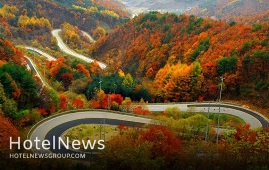
Preliminary work of collecting data about Karaj-Chalus road, its associated structures, and nearby villages has been commenced by the tourism directorate of Alborz province to have the scenic road registered on Iran’s national heritage list. Based on follow-up field visits and preliminary investigations, it was decided to develop a dossier for the national registration Karaj-Chalus road as a historical, cultural, and natural route that has considerable potential in the field of tourism, CHTN quoted the provincial tourism directorate as saying on Monday. Natural landscapes, villages with historical texture, the architecture of different periods, local food, traditional clothing, and the original Karaji dialect are among the attractions of the Karaj-Chalus axis, a provincial official said. In connection with political geography, the Karaj-Chalous road was once the most important route and connection of the southern slopes of Alborz to the northern regions of the country. As a piece of history, Chalus Road, also less well known as Road 59, was constructed during the Qajar era by the local people with very primitive hand tools. The 160 km road crossing and crawling up the Alborz Mountains offers beautiful landscapes, waterfalls, and springs. Each season presents its own special beauty along the road. The mesmerizing view changes as one travels on Chalus; from trees lining up on both sides of the pavement to getting engulfed and surrounded by the Alborz, and sometimes have dramatic views of the Karaj River, which runs along part of the road. The road between Tehran and the Caspian Sea has become a destination in itself for many Tehranis who take it just to escape the hustle and bustle of the city or for a relaxing day out with family and friends.
Create: May 26, 2021 Edit: May 26, 2021 Regional News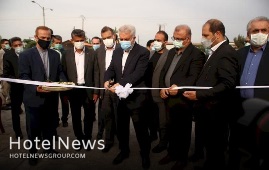
Cultural Heritage, Tourism and Handicrafts Minister Ali-Asghar Mounesan on Monday inaugurated a traditional restaurant during his visit to Sari, the capital of the northern Mazandaran province. Constructed in a piece of land covering 834 square meters in area, the traditional restaurant is expected to generate 18 job opportunities, CHTN reported. The minister was scheduled to inaugurate 78 tourism-related projects -- virtually or in-person -- during his two-day visit to the northern province, the report added. Last year, Iran joined an online campaign launched by the World Tourism Organization (UNWTO) to promote gastronomy as an essential part of tourism. Experts say that food is not merely an organic product with biochemical compositions. For members of each community, food is defined as a cultural element. The Iranian cuisine, usually embellished with fragrant herbs, varies from region to region, however, it principally accentuates freshness, deliciousness, and colorfulness. Dizi (a lamb, chickpea, and potato stew made to a centuries-old recipe), fesenjoon (chicken poached in an earthy sweet-and-sour sauce of ground walnuts and pomegranates) are amongst the most popular traditional dishes of the country. Traditional Iranian dishes are usually not overpowered with spices though kitchens are embraced with ranges of subtle and yet contrasting flavors such as a combination of sweet and sour or mild. Stretched along the Caspian Sea and Alborz mountain range, Mazandaran is a popular destination for domestic holidaymakers and it is home to more than 3500 villages and rural areas.
Create: May 26, 2021 Edit: May 26, 2021 Regional News
Predicting the return of corporate travel would be a cinch if foretelling the future was foolproof. No one, however, has that extraordinary prescience and even if they did, the future is, at best, murky. The continuing popularity of work-from-home arrangements, the COVID-19 induced reluctance of both individuals and companies to get back out on the road, and issues throughout the travel supply chain are all converging to create a less-than-hospitable environment for individual business travelers. “Before you get corporate travel back, you have to get people back to the office,” said Daniel Lesser, President and CEO of LW Hospitality Advisors. “It’s going to be a bit of a slog, at least until Labor Day.” Among the short-term problems, he continued, is airline flight capacity. “A lot of it will have to do with air lift. Carriers are being careful about yield management,” he said. However, Lesser added, “The summer is going to be phenomenal [for leisure travel] but the rubber will hit the road after in terms of group and corporate business.” Shifting BusinessLWHA’s COO and Principal Evan Weiss sees an even more dramatic delay on the horizon. “At the beginning, I thought the recovery would come first with leisure business, then leisure group, corporate transient and then corporate group,” he said. “But there’s been a paradigm shift. Companies now can cut back their travel by, for example, having two in-person board meetings and two on Zoom.” He continued, “After leisure, which is certainly back, we’re thinking corporate groups will be next to come back, and then corporate transient business.” That creates problems for hoteliers. In the U.S., the corporate average room rate in February 2020—the last full month before the coronavirus squeezed the life out of most of the global hotel industry—was $175.15. A year later, it stood at $111.03, down 35.6% year-over-year, according to HotStats data. In Europe, in February 2021, the corporate rate was €77.30, down 35.2% YOY. Meanwhile, in China, corporate travel didn’t have the dramatic swoon seen in other parts of the world. Its lowest point was in April 2020, when the corporate rate hit $65.65, a 24.8% YOY decline. As of April 2021, the $73.03 corporate rate was up 11.2% on the year prior, but still 16% lower than April 2019. The absence of corporate travel is equally disadvantageous since road warriors are typically higher-spending guests than their leisure counterparts. “Corporate folk pay at the last minute, then they book the Ritz-Carlton, and they’re often the ones who drink the most. If you lose that, it’s problematic,” Weiss said. But Chris Green, CEO of third-party management company Chesapeake Hospitality, has a rosier outlook on the return of corporate, framing it in the context of the domino effect. “Once a big player like Bank of America or Deloitte says ‘As long as you’re vaccinated and feel comfortable, you can travel,’ then it’s off to the races,” he said. “I believe companies will say ‘If you’re in a client-facing role, you have to get out there.’” Still, some timid travelers could remain skittish if they don’t feel safe and comfortable back at a hotel, Green noted, meaning properties must get the word out on the extraordinary efforts being taken to keep COVID-19 at bay. To do so, Chesapeake is “asking key questions about traveler confidence and experience and then using responses in sales and marketing presentations,” said Green. The company also is encouraging guests to share their experiences on travel-review sites. “We’re cleaner, safer and more sanitized than we’ve ever been,” Green said. “That needs to be the front-facing message because companies must feel certain that the hotels where they’re putting travelers are good citizens.”
Create: May 25, 2021 Edit: May 25, 2021 Hotel Management
St. Regis Hotels & Resorts today announced the opening of The St. Regis Bermuda Resort. Extending the legacy of St. Regis from New York’s finest address of 55th and Fifth, the resort blends the timelessness of a bygone era with avant-garde Bermudian design and cultural influences. Situated in the historic Town of St. George’s, an UNESCO World Heritage site, and nestled among the soft sands and turquoise water of St. Catherine’s Beach, the resort is the first Marriott International luxury brand property to debut on the island. Drawing upon the celebrated spirit of leisure travel, The St. Regis Bermuda Resort seamlessly brings together elegant accommodations, exceptional amenities, and the brand’s signature Butler Service to create an enchanted island escape. “Bermuda has long served as an exclusive destination for the global luminaries, making it the ideal location to debut a glamorous new St. Regis resort. Much like the island, St. Regis is steeped in rich history, offering a storied past and exciting future,” said George Fleck, Vice President and Global Brand Leader for St. Regis Hotels & Resorts. “The St. Regis brand’s founding family, the Astors, spent time on this beautiful island more than a century ago. Now, the House of Astor’s celebrated traditions and rituals will bring this visionary spirit, avant-garde style and impeccable service back to Bermuda where our address is your muse.” Spanning St. Catherine’s Beach in a gentle arc, the OBMI designed architecture and interiors of The St. Regis Bermuda Resort draw inspiration from the destination’s notable local geography, heritage and traditions, beautifully weaving the island’s legacy together with the glamourous spirit and sophistication of St. Regis. The resort features 120 elegant guestrooms, including 21suites and an ultra-luxury residential development offering two and three-bedroom residences. Each guestroom features a private balcony and is designed to immediately draw the eye to expansive ocean views and stunning vistas of Bermuda’s celebrated Fort St. Catherine. Speaking to the island’s bold fortitude, stone foundations and formations inform texture and patterns, while the purposeful irreverence of Bermuda’s fashion is brought in through saturated colors and striking geometry. The St. Regis Bermuda Resort promises to be an enchanted beachfront oasis for guests and local luminaries alike,” said Jan Vanhaelewyn, General Manager at The St. Regis Bermuda Resort. “With bespoke service, exquisite design, outstanding culinary venues, the historic Five Forts Golf Course, and more than a dash of glamour, we hope to inspire and contribute to the local hospitality landscape and help elevate luxury in this iconic leisure destination.” The resort’s sophisticated food and beverage offerings include Lina, a flavorful all-day restaurant whose name is a playful nod to the nickname of St. Regis’ founding patroness Mrs. Caroline Astor. This venue features a delectable, light and fresh menu that leans into Bermuda’s coastal offerings and is inspired by the irreverent glamour of yachting clubs of the past. In the evening, the signature blackboards of famed BLT Steak NY will share daily specials, offering guests the finest in modern steakhouse fare. At the iconic St. Regis Bar, guests can socialize and celebrate while enjoying champagne, libations and light bites. The resort will also debut the Gates Bay Mary, its unique twist on the brand’s signature cocktail – the Bloody Mary. The Gates Bay Mary is named for the turquoise bay bordering the resort and infuses native fennel, Goslings Gold Seal Rum, Outerbridge’s Original Sherry Peppers Sauce, and a special spice mix created on the island Overlooking azure waters, the resort features both an adult and a family pool where guests can lounge luxuriantly or enjoy a private cabana for an exclusive retreat. Indulgence and relaxation awaits at the St. Regis Spa, which offers a comprehensive menu of unique personalized treatments using natural and precious elements and featuring products by Sothys. Additionally, a 24-hour fitness center offers state-of-the-art equipment. Younger guests will be able to enjoy unique amenities and enriching activities at The St. Regis Children’s Club, while Family Traditions programming offers meaningful excursions and experiences for the whole family. True to the Astors love for sports and speed, both guests and locals can relax with a day on the links or a night at the casino. Breathing new life into a historic landmark, the scenic Five Forts Golf Course is a marvelous and challenging 18-hole course. Named for the five notable forts that surround it, leisure seekers will tee off near Fort Victoria and enjoy captivating ocean views as they make their way through the 4,436-yard course, concluding at Fort St. Catherine. State-of-the-art, GPS-enabled golf carts will ensure the brand’s bespoke service reaches guests no matter where they are on the green. For a dazzling evening of sophistication and glamour, the resort proudly features the St. Regis brand’s first casino, slated to open later this year. This 5,500 sq. ft. gaming floor offers a variety of options for guests looking to roll the dice, in addition to a salon privé with two private tables. As the finest address for truly bespoke events and celebrations, the resort also features 10,989 sq. ft. of event space. Perfect for executive retreats, family gatherings, or enjoying milestone moments, offerings include a state-of-the-art boardroom, an exceptional ballroom that can host up to 150 people and a stunning terrace for oceanside events. The resort can also create a personalized, private set up on the beach while an additional event lawn located at the 18th hole of the Five Forts Golf Course offers spectacular sunset views overlooking both the ocean and Fort St. Catherine. Informed by the brand’s legacy of celebration from the Gilded Age to the present day, each event at The St. Regis Bermuda is thoughtfully curated and complemented with exceptional service.
Create: May 25, 2021 Edit: May 25, 2021 International News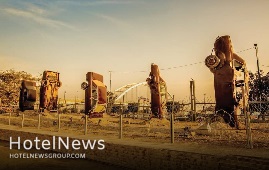
In the past, war tourism destinations were mainly the object of interest of photojournalists appearing solely on pages of crime, but now they can be traced in top travel books and websites. Whatever you call it, from war tourism, dark tourism, disaster tourism, or danger tourism, Iran has more to offer after being involved in the second-longest war of the 20th-century after the Vietnam War. Amongst many border cities directly involved in the 1980–1988 war, Khorramshahr is highly honored as a symbol of resistance during the war against Iraqi invaders. Moreover, the port city is high on the ‘will go’ index of adventure travelers interested in such niche tourism. At this time of the year, Iranians hold special ceremonies to honor the fallen soldiers and to cherish the strength and resistance of the people during “the Sacred Defense Week”, starting on Shahrivar 31 (September 21 this year) when Iraqi armed forces invaded western Iran. The third of Khordad (May 24) marks the anniversary of the liberation of Khorramshahr from Saddam Hussein’s invading army back in May 1982 when Iranians laid another foundation for sacrifice, resistance, and final victory with their blood. Iranian forces recaptured the southwestern strategic port city in a landmark operation code-named Beit ol-Moqaddas. According to Sajad Goharpak, the tourism chief of Khorramshahr, 25 spots have so far been identified in the port city which makes it a noteworthy destination when it comes to war tourism. “Khorramshahr is so great that right now we are facing a museum city because countless incidents took place in every neighborhood of the city.” For now, the country has largely been restored, and very few signs of the war, apart from street names and murals of the martyrs on some streets, can be found. These are the areas where domestic travelers usually go by tour packages are called “Rahiane Nour” (“The Path of Light”). For those interested to visit an epitome of frontlines elsewhere from the former battlefields, Tehran embraces several destinations; the Sacred Defense Museum, Tehran Peace Museum, and Behesht-e Zahra—a graveyard where many of the martyrs are buried. The epic-scale Sacred Defense Museum does bargain something different in modern Iranian history where you can delve into wreckages of rockets, tanks, rifles, vessels, mortars, radars, air defense systems, grounded jets, military supplies, and artillery pieces amongst others. The museum is equipped with a state-of-the-art visual system including projections and video walls, while audio recordings relevant to each period contribute to its charm. The recreation of the liberation of the city of Khorramshahr by the means of virtual exhibits and video projections is amongst the main features of the museum where stands a replica of the Khorramshahr mosque adorned with creamy and turquoise patterned tiles. Some tourists say they are not just interested in visiting live or former warzones out of curiosity. What motivates them is guessing the stories of people who lost their lives, being displaced, wounded, captured, or lost their loved ones in those bitter moments of the history of mankind.
Create: May 25, 2021 Edit: May 25, 2021 Regional News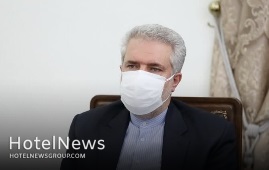
Iran has the potential to become a destination for vaccine tourism regarding considerable efforts the country is making to develop series of domestic COVID-19 vaccines, the tourism minister Ali-Asghar Mounesan has said. There is a capacity to add ‘vaccine tourism’ to the ‘health tourism basket’ of the country after all [Iranian] people are received vaccines…. and the move could fuel a boom in the tourism sector of the country.” In the near future, we will possess the capacity to provide foreigner travelers with the COVID-19 vaccine, especially those from the neighboring countries,” Mounesan said. The Islamic Republic is among the first countries which started developing a vaccine against coronavirus, and now four companies are endeavoring to release their products by September and inoculate the whole population. Out of 16 vaccine production cases, four cases have received a code of ethics and are undergoing clinical trial; it is hoped that another three to four cases will succeed in receiving license by September. According to available data compiled by the tourism ministry, the number of foreign visitors to Iran plunged 94% in the first nine months of the past Iranian calendar year (ended March 20, 2021) as the coronavirus pandemic takes a heavy toll on the tourism industry. The coronavirus epidemic has ruined more than 1.5 million jobs in Iran’s travel sector, tourism minister Ali-Asghar Mounesan said in December. “Over 1.5 million jobs have been lost in the tourism sector of Iran due to the COVID-19 disease…. Many of the tourism-insiders are now unemployed or they are staying at home,” according to Mounesan. Tourism [industry of Iran] was growing before the corona [outbreak], its revenues reached $11.7 billion in 2019, which accounted for 2.8% of GDP, near the average share of tourism in the world GDP, which was 3.2 percent, the minister explained. The ancient land embraces hundreds of historical sites such as bazaars, museums, mosques, bridges, bathhouses, madrasas, mausoleums, churches, towers, and mansions, of which 24 being inscribed on the UNESCO World Heritage list. Under the 2025 Tourism Vision Plan, the country aims to increase the number of tourist arrivals from 4.8 million in 2014 to 20 million in 2025.
Create: May 24, 2021 Edit: May 25, 2021 Regional News
Amara Resort and Spa, a beloved resort in Sedona, Ariz., announced today that it has embarked on a multimillion-dollar renovation that will bring a new and sophisticated “tree lodge” aesthetic to all 100 guestrooms and public spaces on property. Nestled along the banks of Oak Creek, the renovation will be completed in phases in an effort not to affect the guest experience. Amara’s signature restaurant, SaltRock Southwest Kitchen, and the award-winning Amara Spa will also be enhanced, with the full project slated to be completed in fall 2021 ahead of Labor Day weekend. “When the new design is unveiled later this year, Amara will not only have the newest guestrooms in the market but it will be a destination where locals and world travelers alike will come to be immersed in the local culture through well-appointed design elements and Sedona-centric programming,” said Nick Solomon, general manager of Amara. “With the resort’s panoramic red rock views, its creekside location and its walkability to the dining, shopping and entertainment in Uptown Sedona, there’s really no other property like it in Northern Arizona.” Taking inspiration from the surrounding red rocks, metaphysical energy and fabled vortexes for which the small resort town has become famous, the renovations at Amara will bring the outdoors in by encompassing all five of the natural elements surrounding the resort. Every room will feel like a sanctuary as neutral tones blend harmoniously with organic textures, while a deep blue feature wall will serve as an anchor to promote a sense of connection to the sights and sounds of the nearby babbling creek. Rich wooden elements like headboards handcrafted from local fallen trees, bedside lamps and new furnishings will allow guests to feel one with nature. New artwork, carpet and linens reflect the craftsmanship and traditions of the Hopi and Navajo tribes that are indigenous to Northern Arizona as bold patterns, geometric shapes and handwoven details create a more masculine identity. The bathrooms will also be elevated to introduce a more modern and functional approach with walk-in showers with rain shower heads and large porcelain tile that reflects the look of the sandstone layers. The redesigned experience will begin upon arrival as guests enter a social, comfortable and inviting lobby space that allows travelers to gather and recharge. With a strong connection to place, the dramatic, vaulted ceilings will be adorned with two eye-catching chandeliers inspired by star constellations, while wood accents and bold textures create a variety of subtle statement pieces through furniture, art and accessories. A focal point of the lobby will be an elongated bar that extends from the adjoining SaltRock Southwest Kitchen into the communal area in order to encourage guests to grab a cocktail, mix and mingle. Additionally, alterations to the Amara Spa will reconfigure the entry vestibule for dual access to the spa’s lobby and a brand-new fitness center, allowing the previous center to be converted into a private dining or multipurpose room adjacent to SaltRock. Just outside, guests can enjoy the cool mountain air while gazing out past the resort’s heated infinity-edge pool, playing games on the courtyard lawn or by grabbing a bite on SaltRock’s expansive patio that boasts some of the best views in Sedona. “The tree-lodge concept spoke to us the most for this renovation project as we felt that the high-vaulted ceiling and community environment in the lobby reminded us of an elevated Après-Ski ambience, while the rooms nestled amongst the trees gave us the nostalgia of a backyard treehouse,” said Anissa Mendil, of Mendil + Meyer Design Studio. “Our team is inspired by both the spiritual and adventurous personality of Sedona and we’re thrilled to have the opportunity to partner with Amara and breathe new life into this celebrated resort.”
Create: May 19, 2021 Edit: May 19, 2021 International News
Iran’s Minister of Cultural Heritage, Tourism and Handicrafts Ali Asghar Mounesan said in a meeting with the Russian Ambassador to Tehran Levan Jagarian here on Tuesday evening that deepening the bilateral relations is possible through collaboration between the two nations. Tehran favors further improvement of comprehensive bilateral relations with Russia, but this is possible through upgrading the two nations’ ties, said Mounesan. Referring to his first visit to Russia, the Iranian official said the signing of the Shared Action Program and lifting the visa requirement for tourist groups of both countries are among the most important steps taken in that respect. Ambassador Jagarian, too, in the meeting referred to the ongoing visit of a group of Russian tourism industry activists in Iran and noted that the group in its visit identified Iran’s tourism potentials and is scheduled to depart for Russia tomorrow (on Wednesday). The Russian tourists are very eager to visit unexplored and adventurist destinations, and Iran with its historical background, natural attractions and unique potentials in ecotourism is an appropriate destination for them,” he said, referring to the Russians’ enthusiasm for visiting Iran.
Create: May 19, 2021 Edit: May 19, 2021 Regional News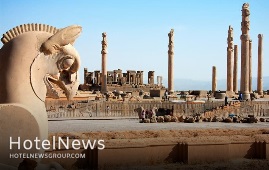
A host of experts will be discussing archaeological findings and the latest attempts for the conservation of the UNESCO-registered Persepolis for future generations. “In this webinar, experts and researchers in the fields of archaeology, conservation and restoration, archeology, linguistics, documentation, architecture and civil engineering, geology, biology, law, statistics, etc. will discuss and exchange views on the ancient Persepolis during a four-day international webinar, which starts on Sunday,” CHTN quoted the organizers as saying on Saturday. Archaeological achievements in the World Heritage site will be discussed on the first day of the conference while decades of conservation, restoration, documentation projects would be topics for the second day. On the third day, applied research on conservation and restoration, documentation will be scrutinized. Moreover, comprehensive conservation plans for the architecture and conservation of the site are set to be conferred on the last day of the event. Persepolis, also known as Takht-e Jamshid, whose magnificent ruins rest at the foot of Kuh-e Rahmat (Mountain of Mercy) is situated 60 kilometers northeast of the city of Shiraz in Fars province. The ruined royal city ranks among the archaeological sites which have no equivalent, considering its unique architecture, urban planning, construction technology, and art. Persepolis was burnt by Alexander the Great in 330 BC apparently as revenge to the Persians because it seems the Persian King Xerxes had burnt the Greek City of Athens around 150 years earlier. The city’s immense terrace was begun about 518 BC by Darius the Great, the Achaemenid Empire’s king. On this terrace, successive kings erected a series of architecturally stunning palatial buildings, among them the massive Apadana palace and the Throne Hall (“Hundred-Column Hall”). This 13-ha ensemble of majestic approaches, monumental stairways, throne rooms (Apadana), reception rooms, and dependencies is classified among the world’s greatest archaeological sites. The site is marked by a large terrace with its east side abutting the Kuh-e Rahmat (“Mount of Mercy”). The other three sides are formed by a retaining wall, varying in height with the slope of the ground from 13 to 41 feet (4 to 12 meters); on the west side, a magnificent double stair in two flights of 111 short stone steps leads to the top. On the terrace are the ruins of several colossal buildings, all constructed of a dark gray stone (often polished to a marble-like surface) from the adjacent mountain. According to Britannica, the stone was cut with the utmost precision into blocks of great size, which were laid without mortar; many of them are still in place. Especially striking are the huge columns, 13 of which still stand in the audience hall of Darius I (the Great; reigned 522–486 BC), known as the Apadana, the name given to a similar hall built by Darius at Susa. There are two more columns still standing in the entrance hall of the Gate of Xerxes, and a third has been assembled there from its broken pieces. In 1933 two sets of gold and silver plates recording in the three forms of cuneiform—ancient Persian, Elamite, and Babylonian—the boundaries of the Persian empire were discovered in the foundations of Darius’s hall of audience. Several inscriptions, cut in stone, of Darius I, Xerxes I, and Artaxerxes III indicate to which monarch the various buildings were attributed.
Create: May 16, 2021 Edit: May 16, 2021 Regional News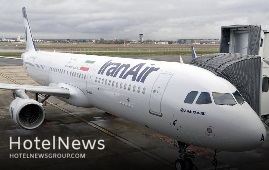
The average of international travels to and from Iran fell by 80 percent during the past Iranian calendar year 1399 (ended on March 20, 2021) from a year earlier. “During this period, 4,343,163 passengers entered the country, which included 3,030,464 Iranian passengers and 512,699 international travelers,” Mehr quoted Arezou Ghaniun, an official with the Islamic Republic of Iran's Customs Administration, as saying on Saturday. “From the beginning of 1399 to the end of it, we saw a significant reduction in passenger traffic to the country or vice versa in land, sea, rail and air borders, which were caused by various coronavirus restrictions.” International tourist arrivals to Iran plunged 72% during the first eight months of the year when compared to 2019, according to data compiled by the World Tourism Organization. Restrictions on travel introduced in response to the COVID-19 pandemic continue to hit global tourism hard, with the latest data from the UNWTO showing a 70% fall in international arrivals for the first eight months of 2020. Iran, however, has experienced different rates of downfall for inbound passengers over the past months. In the first three months of 2020 (January, February, March), the tourism industry of the country recorded negative rates of 90, 92, and 94 percent, respectively, compared to the same period last year, according to the organization. The fall reached 96 and 97 percent in April and May. And in June, a negative 84% was recorded. But the interesting point in the statistics published by the World Tourism Organization is a steep slope of the improvement of Iran’s tourism arrivals during the last two months, as such growth has leaped 35% in July and August. Optimistic forecasts, expect the country would achieve a tourism boom after coronavirus contained, believing its impact would be temporary and short-lived for a country that ranked the third fastest-growing tourism destination in 2019. According to the newest UNWTO Barometer, international arrivals plunged 81% in July and 79% in August, traditionally the two busiest months of the year and the peak of the Northern Hemisphere summer season. The drop until August represents 700 million fewer arrivals compared to the same period in 2019 and translates into a loss of US$ 730 billion in export revenues from international tourism. This is more than eight times the loss experienced on the back of the 2009 global economic and financial crisis. “This unprecedented decline is having dramatic social and economic consequences, and puts millions of jobs and businesses at risk,” warned UNWTO Secretary-General Zurab Pololikashvili. “This underlines the urgent need to safely restart tourism, in a timely and coordinated manner”. UNWTO’s Panel of Experts foresees a rebound in international tourism in the current year, mostly in the third quarter. However, some experts suggest the rebound could occur only in 2022. Travel restrictions are seen as the main barrier standing in the way of the recovery of international tourism, along with slow virus containment and low consumer confidence. The lack of coordinated response among countries to ensure harmonized protocols and coordinated restrictions, as well as the deteriorating economic environment, were also identified by experts as important obstacles for recovery. The Islamic Republic expects to reap a bonanza from its numerous tourist spots such as bazaars, museums, mosques, bridges, bathhouses, madrasas, mausoleums, churches, towers, and mansions, of which 24 being inscribed on the UNESCO World Heritage list. Under the 2025 Tourism Vision Plan, Iran aims to increase the number of tourist arrivals from 4.8 million in 2014 to 20 million in 2025.
Create: May 16, 2021 Edit: May 16, 2021 Regional News
